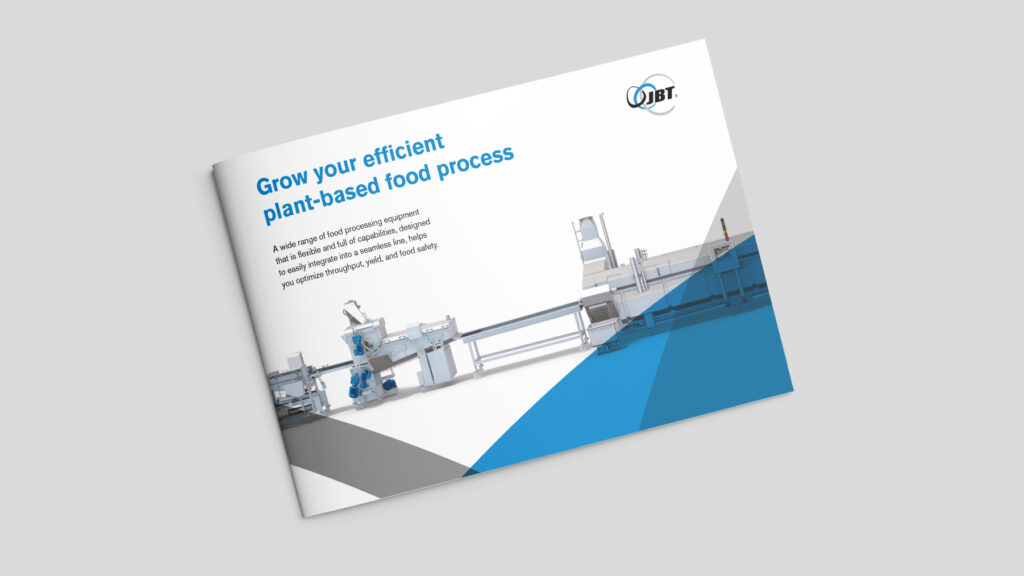Cookers, ovens, and fryers mostly use thermofluidic heating powered by gas or oil. But today, producers of plant-based food products are looking for ways to power their processing equipment with renewable energy sources. One reason is that climate change’s impact is becoming more evident, and sustainability is essential for consumers when choosing what brand to buy. Another is that the cost and availability of fossil fuels like gas, oil, and coal critically impact production costs. To meet this growing demand, JBT now offers the option of electric heating in all warm food processing equipment.
Electric ovens are the future of plant-based food processing
The demand for electricity as a source for heating used to be low, but it is rising steadily, especially in countries where electricity is cheaper than gas. As gas and oil prices rise and the supply becomes more unstable, the demand has increased, fueled by a growing concern about not having sustainable solutions. The combination of subsidized energy sources and rising gas prices has made electric cookers more attractive. Electricity reduces fossil gas use, and when it is generated by solar, hydro or wind power, it provides a renewable energy source and lowers costs.
“In a way, it follows the same trend as cars right now,” says JBT Regional Solutions Manager Marcelo Scharlack. “Cars are slowly migrating from fossil fuel to electricity, and the reasons for that are the same that drive the transition from gas to electricity when it comes to cookers and fryers. They are more environmentally friendly, have a smaller carbon footprint, and it doesn’t pollute the air.”

Is there any difference in performance?
Thermofluidic heating is a method in which a food-safe mineral fluid is heated up in a boiler and transported to the equipment with a pump. The fluid exchanges the heat and is then transported back and heated up again. The boiler traditionally runs on gas or diesel but could also be heated with electricity.
In general, thermofluidic heating gives a little better control over the process because, when using electricity, the resistance generates some residual heat. So, thermofluidic heating can cool down the oven a bit faster. The ability to control the temperature while in operation is the same, but the reaction time for thermofluidic heating is a little bit faster.
“To address this difference, we have chosen not to use the traditional on-off switch to control the electric cooker, which means that we don’t heat it up and then shut it off to let it cool down and turn it on again to regulate temperature,” says Lee Fryer, JBT Turn Key & Solutions Manager. “Instead, we use thyristors that give the exact amount of energy that’s needed. It works just as a dimmer for a lamp and provides more accurate control of the heating process, and the result is just as good as thermofluidic heating.”

Electric ovens have additional benefits
Besides the benefit of using fossil-free and renewable energy, an electric oven has some other advantages. For example, by using electricity to heat the oven, you don’t need the boiler installation, which reduces the footprint.
“You can also reduce maintenance costs because you don’t need people maintaining a boiler or changing the fluid from time to time,” says Lee Fryer.
Furthermore, the initial investment in your processing line is reduced. Although you have to invest in the resistances and controls for the electric oven, thermofluidic heating needs significant investment in pipes and insulation, depending on how far your boiler is from the oven.
Invest in a new oven is better than remodeling an old
Today all JBT ovens, cookers, and fryers come with the option of using electricity as the source for heating. We can also help you with the installation, tailoring the location of the control cabinets and connections, and all the electric wiring.
For those with an old thermofluidic heated oven already installed, it’s better to invest in a new electric oven because changing a thermofluidic oven into an electric one is very costly. “All the heating elements look different, so a major rebuild is needed,” says Marcelo Scharlack. “It’s like you are building a new oven at the site, so it is complicated and expensive, making it more economical to replace it with a new electric oven.”
To learn more about using electricity as the source of heating with renewable energy, read about how Norsk Kylling, together with JBT, built one of the world’s most modern and sustainable factories.
Are you interested in an all-electric food processing line for your plant-based product?
Book a meeting with one of our food processing experts to learn more!


